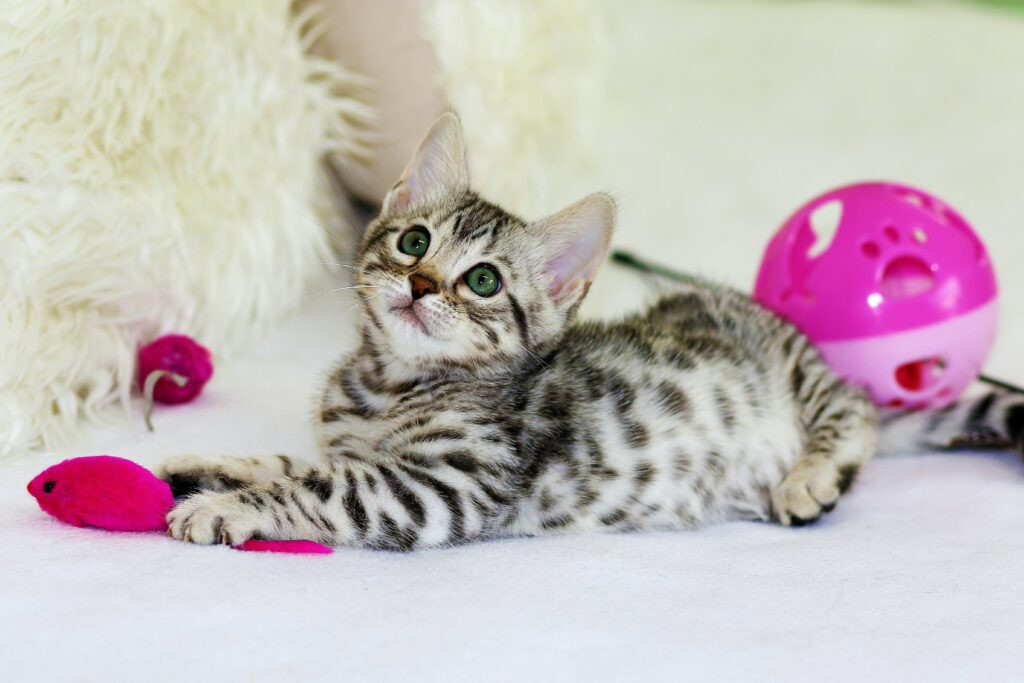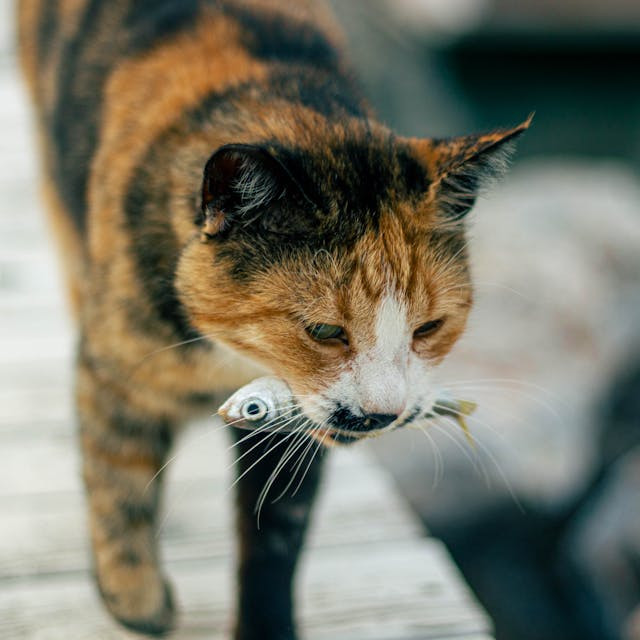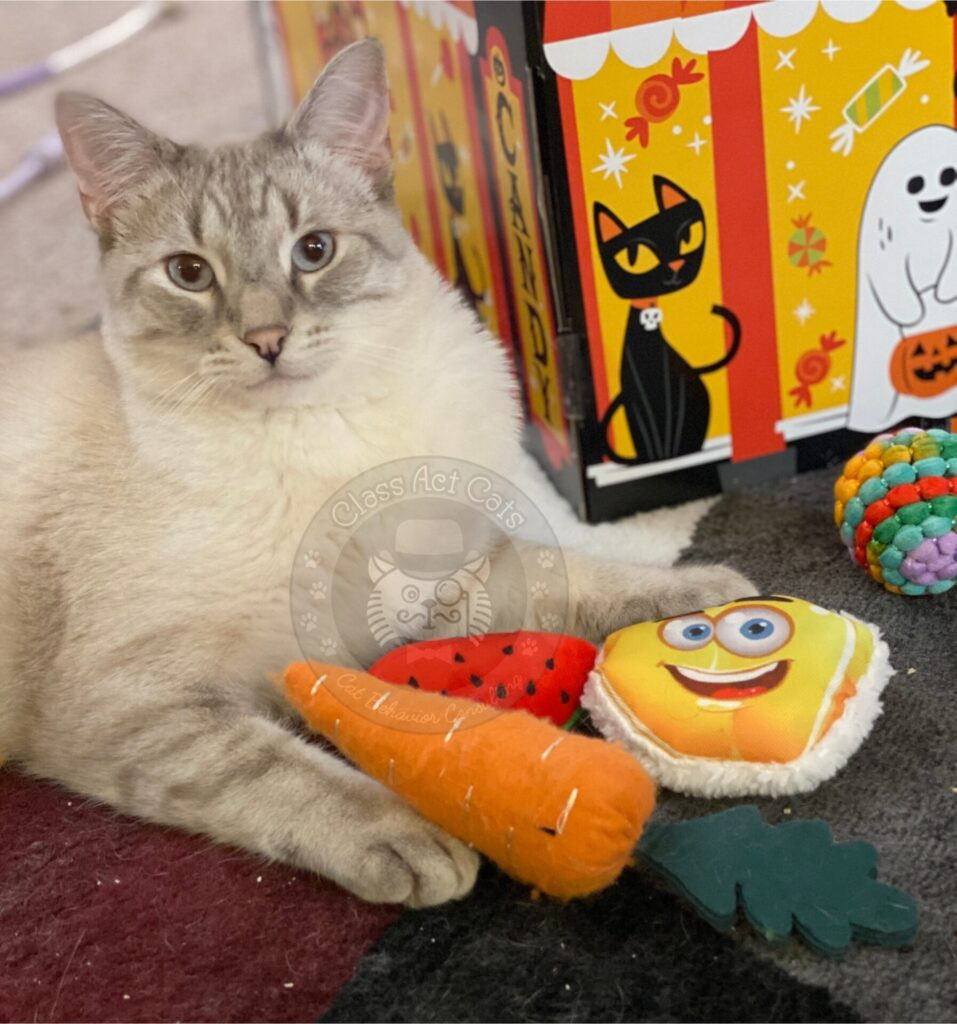Are you wondering what “cats the play about” truly means when it comes to your furry companion? It’s all about understanding and fulfilling their natural hunting instincts through interactive and stimulating playtime. At solcat.net, we provide expert guidance to help you unlock the secrets to a happy, active, and well-behaved cat. Discover the joy of cat ownership and transform your feline friend’s life! Unlock feline happiness with enriched environments, interactive games, and stimulating activities for your cat.
Table of Contents
- Play Session Basics
- The Hunt Cycle
- How To Use Cat Toys
- Vary Your Play
- Move Under Things
- Engage All Senses
- Keep It Novel
- Play With Your Cat At The Right Time
- A Word Of Caution With Lasers And Electronic Toys
- Playing With Your Cat Correctly
- FAQ
- Need Help With Your Cat’s Behavior?
1. Play Session Basics
What is “cats the play about” in essence? It is about imitating a hunt, similar to what your cat would do in nature to catch a tasty snack. Cats are natural hunters, so play sessions should mimic hunting behaviors.
Cats naturally hunt small prey like birds, insects, and mice. These hunts are frequent but short. Aim for multiple play sessions lasting 5 to 15 minutes throughout the day. While longer sessions might seem beneficial, shorter, more frequent sessions are more effective in satisfying your cat’s hunting instincts.
To make play engaging, use toys that you move to capture your cat’s attention, simulating live prey. Toys scattered on the floor appear as dead prey and won’t stimulate your cat’s hunting drive.
 A grey kitten lying on a white carpet with some bright pink cat toys.
A grey kitten lying on a white carpet with some bright pink cat toys.
A playful grey kitten enjoys bright pink cat toys on a soft white carpet, epitomizing feline fun.
2. The Hunt Cycle
What does “cats the play about” involve in terms of the hunt cycle? It involves completing a full hunt cycle to satisfy their natural instincts. This cycle includes:
- Finding prey
- Stalking and plotting
- Chasing the prey
- Catching the prey
- “Dispatching” the prey
- Eating their catch
Many cat owners unintentionally interrupt play sessions during the stalking and plotting phase. It might seem like your cat isn’t interested if they’re just watching the toy, but this is a vital part of the hunt. As long as your cat is focused on the toy, they’re engaged and enjoying the game.
Don’t forget the consumption phase! Finish each play session by giving your cat a small meal or some delicious treats. You can also use a food puzzle afterwards for a supplemental hunt.
3. How To Use Cat Toys
What is “cats the play about” regarding the proper use of cat toys? It’s about avoiding common mistakes, such as dangling a toy directly in front of your cat’s face. This doesn’t mimic natural hunting behavior, as prey wouldn’t run up to a cat and jump around. Additionally, cats have poor close-up vision, making it hard for them to see the toy clearly.
Instead, move the toy from side to side or away from your cat, mimicking how a mouse would behave. Moving the toy around objects, through a play tunnel, or into a corner can also pique your cat’s interest, as they might see the prey as easier to catch.
4. Vary Your Play
How does varying your play contribute to “What Is Cats The Play About?” Keeping things interesting for your cat is essential. Change the speed of the toy during play sessions, alternating between fast and slow movements.
If you’re using a feathered toy, such as the Fukumaru Feathered Wand Toy or Da Bird, let the toy mimic a bird by flying it in the air for part of the session, then allowing it to land.
As the play session progresses, consider how a real hunt would unfold. The prey would eventually tire or get injured. Signal to your cat that the prey is weakening, making it a more successful kill. You can achieve this by moving the toy erratically, using lurching or jerky motions. This indicates to your cat that now is the time to strike.
 A cat carries a fish in their mouth
A cat carries a fish in their mouth
A cat proudly carries a fish in its mouth, embodying the thrill of the successful hunt and catch.
5. Move Under Things
What is “cats the play about” when incorporating movement under objects? One effective way to engage your cat is by moving a toy under something. If your cat enjoys nipping at your toes under the covers, they might appreciate this style of play.
Try using a towel to move the toy under or use products like Sheer Fun For Cats. Many cats enjoy pouncing on things, making this a stimulating and enjoyable activity.
6. Engage All Senses
Why is engaging all senses important in understanding “what is cats the play about?” Play isn’t just about sight or movement; it should involve other senses to fully stimulate your cat.
Use catnip, silver vine, or valerian root to stimulate your cat’s sense of smell during play. Noises and sounds can also engage cats, provided they aren’t easily startled. Look for toys that crinkle, have a bell, or make chirping bird sounds. Alternatively, move the toy under crinkle paper or lightly tap it against the ground.
Another engaging activity is using a large box filled with crinkle paper or newspaper. Use a wand toy inside the box to create noise, piquing your cat’s curiosity and encouraging them to leap in to find the source. You can also use a tunnel or play tent, as many of these make crinkling noises.
Bonus idea: After the play session, toss a small handful of kibble or treats into the box to create a homemade food puzzle.
 Poutine the cat with a variety of toys
Poutine the cat with a variety of toys
Poutine the cat surrounded by various toys, illustrating the importance of variety and sensory engagement in feline playtime.
7. Keep It Novel
How does keeping play novel relate to “what is cats the play about?” Cats often lose interest in a toy after a few days or weeks, or even after a few minutes during a play session. This is normal cat behavior.
Playing with your cat should involve rotating different toys within a play session or over multiple sessions. If your cat gets bored quickly, keep multiple wand toys nearby so you can swap them out during the session.
For cats with longer attention spans, it’s still beneficial to change out toys regularly. After about a week of using a toy, put it away and introduce a new one. After a few weeks, bring the old toy back out, and it will seem new again to your cat.
8. Play With Your Cat At The Right Time
What does “cats the play about” involve in terms of timing your play sessions? Play with your cat when they’re most receptive to it. While there’s some flexibility, certain times of day are ideal for play.
Cats are crepuscular, meaning they are most active around sunrise and sunset. Schedule play sessions for these times to align with your cat’s natural energy levels. Playing with your cat first thing in the morning and before bed can tap into their peak energy times. Similarly, if your cat gets the zoomies around a particular time, engage them in play then.
Another good time to play is before feeding your cat. Ending a play session with a small meal is a great way to wind down the activity. Playing before a meal is more satisfying, but playing after is also acceptable.
 An outline of a cat against an orange background. There are leaves outlines.
An outline of a cat against an orange background. There are leaves outlines.
A cat outline against an orange background, symbolizing the crepuscular nature of cats and their peak activity times at sunrise and sunset.
9. A Word Of Caution With Lasers And Electronic Toys
What does “cats the play about” advise regarding lasers and electronic toys? While electronic toys can be useful, particularly for energetic cats, they should supplement active play, not replace it. They can distract a cat or provide entertainment when you’re unable to engage in a play session. However, some electronic toys can be loud and scare cats, and not all are designed with cats’ preferences in mind.
A few electronic toys that cats may enjoy include the PetLibro Mouse Toy, the Hexbug Remote Control Mouse, and the All For Paws Interactive Butterfly Toy.
Laser Problems
What are the potential problems with lasers, and how do they factor into “what is cats the play about?” Lasers can be frustrating for cats because they can never catch the light. While it might seem like they’re having fun, the inability to catch the laser makes the play session unsatisfying.
If you use a laser, do so briefly at the start of a play session and quickly transition to an actual toy. It’s better to avoid lasers entirely, but if you choose to use one, always end the session with the laser pointing at a physical toy so your cat can “catch” something. Avoid automatic toys with lasers, as they can’t offer this satisfying conclusion.
10. Playing With Your Cat Correctly
How does playing with your cat correctly relate to “what is cats the play about?” Playing with your cat in a way they enjoy offers numerous benefits. It reduces boredom, promotes happiness, and minimizes behavior problems, especially play aggression. Not all play is equal, so ensure you’re playing in a way that allows them to complete the full hunt cycle.
According to research from the Cornell Feline Health Center, in July 2025, proper play enriches a cat’s life and reduces stress.
FAQ
1. Why is it important to mimic a hunt when playing with my cat?
Mimicking a hunt fulfills your cat’s natural instincts, providing mental and physical stimulation that keeps them happy and healthy.
2. How long should play sessions with my cat be?
Aim for multiple short play sessions of 5 to 15 minutes throughout the day to keep your cat engaged without overwhelming them.
3. What are the key steps in a cat’s hunt cycle?
The hunt cycle includes finding, stalking, chasing, catching, dispatching, and “eating” the prey to fully satisfy your cat’s hunting instincts.
4. Why shouldn’t I dangle a toy right in front of my cat’s face?
Dangling a toy directly in front of your cat doesn’t mimic natural prey behavior and can be difficult for them to see due to their poor close-up vision.
5. How can I keep play sessions interesting for my cat?
Vary the speed and movement of the toy, use different types of toys, and incorporate elements that engage multiple senses to keep your cat engaged.
6. Is it okay to use laser pointers to play with my cat?
Laser pointers can be frustrating for cats because they can’t catch the light. If you use one, transition quickly to a physical toy to provide a satisfying conclusion.
7. How often should I rotate my cat’s toys?
Rotate your cat’s toys every week or so to keep them novel and interesting, preventing boredom and maintaining their engagement.
8. What is the best time of day to play with my cat?
Cats are most active around sunrise and sunset, so these are ideal times to schedule play sessions to align with their natural energy levels.
9. Can electronic toys replace active play with my cat?
Electronic toys can supplement active play but should not replace it entirely. They can be useful when you’re unable to engage in a play session.
10. How does proper play reduce behavior problems in cats?
Proper play reduces boredom, promotes happiness, and allows cats to fulfill their natural hunting instincts, which minimizes behavior problems like play aggression.
Need Help With Your Cat’s Behavior?
Do you need personalized advice or help with behavior problems related to playing?
Visit solcat.net to explore more articles, connect with other cat lovers, and find resources to enhance your feline friend’s life. Contact us at +1 (206) 386-4000, visit our address at 950 Alaskan Way, Seattle, WA 98104, United States, or explore solcat.net for further information. Let’s create a happier, healthier world for cats together!
A playful cat enjoys an enriched environment, demonstrating the positive impact of interactive and stimulating activities on feline well-being.

